October 25, 2005
7:30 to 10:00 AM
Fox/Gittis Foyer
Liacouras Center
Temple University Main Campus
Business continuity planning is an important consideration for any organization including traditional high availability enterprises such as banks as well as non-profit organizations such as educational institutions. The basic idea of business continuity is that an organization has a plan in place to continue operations when a disruption occurs such as natural or other disasters. Over the years, the concept of business continuity has evolved to include not just data backup, but also crisis management, application, data and network recovery services, risk assessment, and security. In this panel discussion we will explore the current state of the art of business continuity planning and implementation in the Philadelphia region.
Panelists
- Susan Rogers, Senior Vice President – Enterprise Risk Management, GMAC Commercial Holding Corporation
- Michael Cox, Director – Operations Integration, Lockheed Martin Integrated Systems & Solutions
- Brian Turley, President, Strohl Systems
- Joe Dahan, Director – Business Continuity and Disaster Recovery Planning, SEI
- Cherif Sleiman, Chief Technologist, Nortel Networks Office of Technology
Moderator
- Timothy O’Rourke, Vice-President for Computer and Information Services, Temple University




